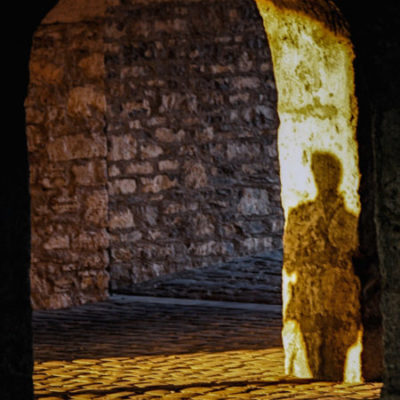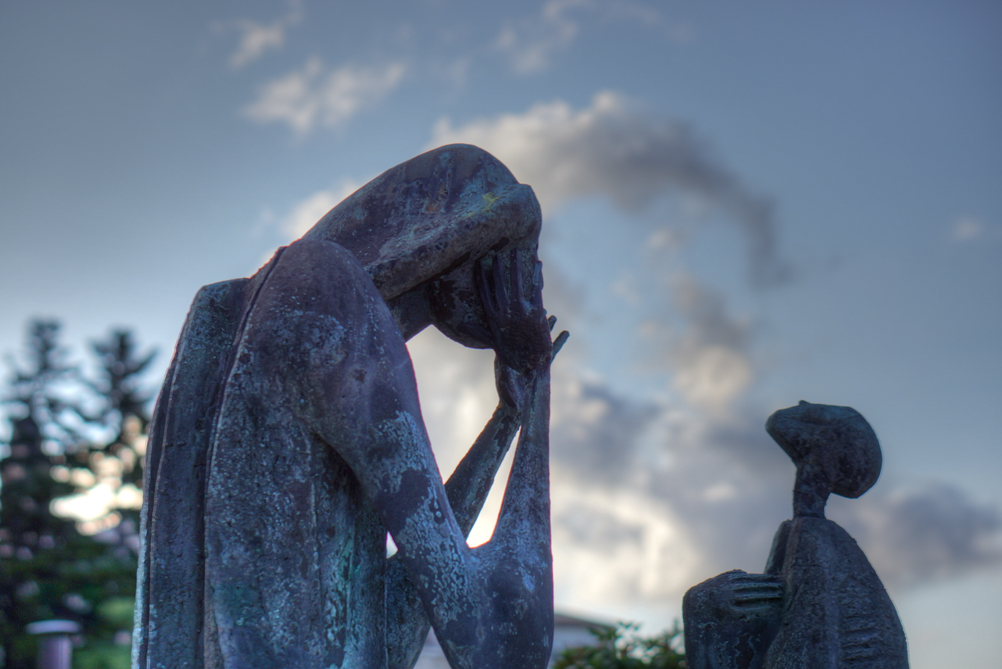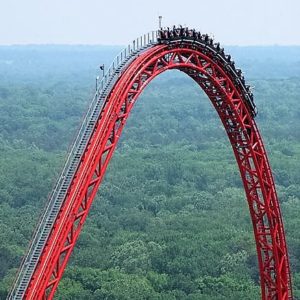by Alan Briskin | Collective Madness, Collective Wisdom
 (Also published in the Huffington Post) Are these times too absurd to address issues rationally? Are we in times so serious and fragile that it is inappropriate to make light of them? Is resistance to threat our only choice, or can this be a time to renew principles and practices that remind us of our shared humanity? Wisdom is not about final answers but about a willingness to engage and a capacity to discern what is needed in the moment. Collective wisdom is about how we do this together.
(Also published in the Huffington Post) Are these times too absurd to address issues rationally? Are we in times so serious and fragile that it is inappropriate to make light of them? Is resistance to threat our only choice, or can this be a time to renew principles and practices that remind us of our shared humanity? Wisdom is not about final answers but about a willingness to engage and a capacity to discern what is needed in the moment. Collective wisdom is about how we do this together.
Seeking wisdom is also about listening, especially from within — to sense what is right action, what wounds may need to be addressed, what relationships help us navigate turbulent times. For me, it is also about finding a creative edge, pushing me to the brink of psychological comfort. In a few weeks, I will be announcing public programs that I will be co-convening involving collective wisdom practices and sacred leadership. However, I also feel a compelling need to address the collective shadow, finding ways to walk a fine line between reason and absurdity, collective danger and collective awakening.
I woke up recently with a startling question: What would Adolf Hitler think of contemporary times and particularly of our new president? Initially, the writing was dark and amplified some of my personal fears. The absurdity of my own premise was not being realized. A colleague reminded me that my readers would consciously or unconsciously understand that Hitler self-destructed, as has every dictator, tyrant, autocrat, despot, and authoritarian ruler. Of course, not immediately and not without devastating consequences, but the nature of malignant narcissism, a central feature of the despot’s personality, is not a recipe for organizational competence, let alone social cohesion.
And so I am publishing my rendition of fake news – a transmission from the netherworld in which an unrepentant but lonely Hitler seeks to become Trump’s advisor. I hope readers will find in it both satire’s cutting edge and just enough absurdity to be able to step back and take a deep breath.
Read More
by Alan Briskin | Collective Wisdom
As many of you know, I have been writing about the social and unconscious dynamics behind the U.S. Presidential election of 2016. This final post before the election is more of a meditation and prayer. Please read and forward to as many people that might benefit from reading it.
Read my latest Huffington Post article. A Prayer for Tuesday

And please remember to LIKE, COMMENT, SHARE, and DISCUSS with friends. It is through generous acts of sharing the ideas you value that our collective conversations deepen and bear fruit.
by Alan Briskin | Collective Wisdom

(This post was also published on The Huffington Post)
Introduction / Part One / Part Two / Part Three / Part Four
In Parts I through III, I summarized how our educational system was designed to advance less than a third of our population toward a bachelor’s degree and that the economic consequences for those without a bachelor’s degree were significant. Beginning in the 1970s, not only were the economic opportunities for less educated citizens more scarce, but the wages for these lower-level jobs stagnated, debt mounted, and the disparities between the wealthy and the poor exploded. And from this economic and social context grew a sense of displacement among the white working class and a growing hostility toward the “other.”
***
How does one get beyond the surface events to the underlying dis-eases that flow, capillary-like, through the body of the collective? One counter-intuitive approach, highlighted under the general academic umbrella of sense-making, is to observe an extreme example of an attitude or belief and then trace it to its more conventional contexts.
The example I will use involves an independent candidate’s campaign for congressional office in Tennessee in June 2016. The candidate, Rick Tyler, running for the 3rd Congressional District, posted signs reading “Make America White Again” and a second poster, which had an image of the U.S. Capitol surrounded by Confederate flags with the caption “I Have a Dream.” He defended his strategy by saying he thought there was nothing hateful about the campaign posters; he was only being “provocative.”
Read More
by Alan Briskin | Collective Wisdom

(This post was also published on The Huffington Post)
Introduction / Part One / Part Two / Part Three / Part Four
From Part II:
Prosperity was not disappearing from the American landscape, but simply shifting. In roughly the same 30-year period when growth in workers’ wages was slowing down to a crawl, individual wealth became so concentrated that the 400 richest billionaires in the United States had an accumulated wealth equal to half that of the U.S. population (150 million people).
The staggering inequities of wealth were captured in the rising ratios between CEO pay and average annual wages for nonsupervisory labor — 20:1 in the early 1970s, doubling by the end of the decade, and then continuing on a Mount Everest–like climb to 376:1 by 2000. To put this in perspective, the average CEO compensation in 2007 was $18.8 million, compared with $31,000 for the average worker with only a high school degree and $15,000 for a minimum-wage job — a ratio of 1,253:1.
If these numbers aren’t troubling enough, the great recession in 2008 appeared proof that no one, even the wealthy, was minding the store. A shift in perception was taking place in the collective from a belief that success was a function of merit and effort to a recognition that the system was rigged.
***
The tragic consequences of these historical developments are now being visited upon us in illness, suicide, racial division, and the emergence of demagogic leaders, most notably Donald Trump. In the past year, data has been unearthed that reveals just how serious and widespread the damage has been.
While trying to discover links between well-being and suicide rates, two Princeton economists, Angus Deaton and Anne Case, stumbled onto some harrowing statistics. Analyzing health and mortality data during the period of 1999 to 2014, they discovered skyrocketing levels of suicide, liver disease from alcoholism, and deaths from heroin and prescription opioids in one particular demographic group above all others: 45-to-54-year-old whites with a high school education or less.
To put this in starker terms, white Americans with a high school degree or less are now dying in epidemic proportions from what can only be described as despair. In that group of Americans, 45-to-54-year-old whites, death rates rose by 22% while falling for those with a college education. Death rates also declined for middle-aged blacks and Hispanics as well as for younger and older people of all races and ethnic groups. But not for this particular group of white Americans. Dr. Deaton could think of only one parallel example: “Only HIV/AIDS in contemporary times has done anything like this.”
Read More
by Alan Briskin | Collective Wisdom

(This post was also published on The Huffington Post)
Introduction / Part One / Part Two / Part Three / Part Four
Somehow we have arrived at a moment in time when the entrance of a perceived tough and cunning figure with no need to talk in full sentences has become the advent of a savior, or at least a version of one from the bowels of World Wide Wrestling. What kind of savior is this? What collective pain can account for something so bizarre that if someone told me this was occurring in a parallel universe, I would ask how it was possible?
And so I did. I began asking what was behind the media’s focus on the angry white electorate, as if anger somehow explained the collective pull toward driving off a cliff and yelling “Freedom!”
* **
The starting place for me was learning just how few of us, white or minority, have a college education. And how without a college education, one is set upon by the wolves of illness, debt, and unemployment. How could this be? How is it that a college degree, though barely a starting point to get by in today’s economy, is beyond the reach of so many?
One hundred years ago, it was a novel idea that all children should go to high school. It wasn’t until 1930 that most children did. But, as Bill Gates has pointed out, high schools were never designed to send children onward to a bachelor’s degree. They were designed to prepare a workforce that could follow rules designed for factories and the emerging industrial economy. And high schools met the low bar that was expected of them.
Read More
 (Also published in the Huffington Post) Are these times too absurd to address issues rationally? Are we in times so serious and fragile that it is inappropriate to make light of them? Is resistance to threat our only choice, or can this be a time to renew principles and practices that remind us of our shared humanity? Wisdom is not about final answers but about a willingness to engage and a capacity to discern what is needed in the moment. Collective wisdom is about how we do this together.
(Also published in the Huffington Post) Are these times too absurd to address issues rationally? Are we in times so serious and fragile that it is inappropriate to make light of them? Is resistance to threat our only choice, or can this be a time to renew principles and practices that remind us of our shared humanity? Wisdom is not about final answers but about a willingness to engage and a capacity to discern what is needed in the moment. Collective wisdom is about how we do this together.


